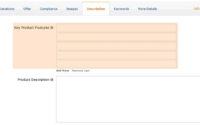Keywords Without Plugins – In WordPress

Keywords Without Plugins; Keyword optimization is one of the most important things in SEO. Practically, when a person searches for a topic, they are more likely to use keywords on a website. This article tries to teach you how to add keywords in WordPress without plugins.
If you also have a WordPress blog, you need to implement strategies to make your blog stand out from the crowd and get tons of organic search traffic.
Search traffic (organic traffic) is the traffic you get from web search engines like Google, Yahoo, Bing, etc. Organic traffic is the king of all traffic sources because it benefits you the most in so many ways.
In this blog post, I will share how you can optimize your WordPress blog for SEO [Search Engine Optimization] without using WordPress plugins because using so many plugins can slow down your website’s loading speed.
For some strange reason, the WordPress Content Management System (CMS) does not have built-in support for adding SEO keywords to certain HTML fields that are important for search engine optimization, which is why so many plugins have been developed by third parties for this purpose.
What is a keyword?
Keywords are words and phrases that are so essential to your blog that your connection shows when people follow those keywords. Search ranking can be significantly improved with acceptable keywords. A short snippet is a meta description of a website or blog. Any search engine uses a standard algorithm to determine which pages are displayed.
Any modern search engine uses similar keyword values but maintains that search engine keyword relevance varies. But it’s also a good idea to keep track of keywords in your web content.
How to add keywords in WordPress without plugins?
Configure WordPress URL and Site URL
Since the launch of the Google Panda algorithm, having duplicate content on your blog is like inviting Google to penalize the blog. Often, even if you don’t copy other people’s content; you are having duplicate content issues due to internal issues in your blog. The first thing to avoid duplicate content, I would suggest checking if you have correctly set the WordPress URL and Site URL on your blog.
If you haven’t set it up correctly, you may end up with two different URLs for your blog www.example.com and example.com. Even though the same page will open in the browser if you open one of these URLs, Google considers them two different sites since they open to two different URLs.
Have SEO-optimized URLs
If you’ve researched the topic of SEO, you might have heard that you need to have SEO-optimized URLs on the blog. When it comes to WordPress, it’s extremely easy to get such crisp and clean URLs that search engines love. To do this, go to the dashboard of your blog then Settings >> Permalink. And choose the permalink structure that looks the most readable and SEO friendly. Remember one thing; fewer depths in the URL are better. This means less “/” (slashes). I recommend using /%postname%/ or /�tegory%/%postname%/ as they are easier to search than the others.
These structures also allow you to place your keyword there, which the default structure does not allow. If you don’t set your blog’s permalink, it will show the default example.com/?P=123 which is not human or SEO friendly.
Add a title and meta descriptions
Adding a title and meta description to a website is really very important because the title is one of the most impactful on search engines, hence it helps in search ranking. The meta description is what forms the search preview for search engines, it even shows up when you share your links on social media.
Content Optimization
There are certain points that you should keep in mind while writing the content as they are important for optimizing the content.
- Use the keyword at least once in the tags and once in the tags in the message.
- Use the target keyword in the post with a keyword density of 2%.
- Do not fill in keywords.
- Use a few semantic keywords instead of using the main target keyword all the time in the post.
Image optimization
Image Optimization Image optimization is important because image search sends a good chunk of traffic to blogs and websites. With WordPress, it’s very easy because when you upload an image you get these boxes where you can put the title, caption, alt text, and description of the image.
According to SEO, filling in the alt text is important, and the rest is up to you whether you fill it in or not. One last thing, when you save an image to your desktop, give it a readable name instead of 123.jpg, 345.png because when uploaded to the blog, it gets a URL where the name appears at the end.
Add meta description and keywords
WordPress SEO by Yoast is an excellent SEO plugin. Here is the code to include metadata and keywords in your header. Paste it into the style’s functions.php file.
function add_meta_tags() {
global $post;
if ( is_single() ) {
$meta = strip_tags( $post->post_content );
$meta = strip_shortcodes( $post->post_content );
$meta = str_replace( array("\n", "\r", "\t"), ' ', $meta );
$meta = substr( $meta, 0, 125 );
$keywords = get_the_category( $post->ID );
$metakeywords = '';
foreach ( $keywords as $keyword ) {
$metakeywords .= $keyword->cat_name . ", ";
}
echo '
<meta name="description" content="' . $meta . '" />' . "\n";
echo '
<meta name="keywords" content="' . $metakeywords . '" />' . "\n";
}
}
add_action( 'wp_head', 'add_meta_tags' , 2 );
Here’s how the PHP code above works:
What it does is get the first 160 characters of the first paragraph of any post and page and display them as a meta description. Gets the post or page category and displays it as meta keywords. So you’ll want to make sure your most important keywords are in the first 160 characters of your content. Otherwise, these keywords will not appear in the HTML meta description tag on Google’s search engine results pages (SERPs). As with meta keywords, using this process will not allow you to add more than one keyword to this HTML field. For a list of two or more keywords, see the next section of this guide on “How to Manually Add Keywords to WordPress”.
It will teach you how to do that with custom fields for each post and page. But be aware that meta keywords aren’t that important for SEO anymore, so you don’t have to worry about adding more than one keyword in that HTML field.
Improve page speed
Google considers loading speed as a ranking factor. Therefore, it is important to improve the page load speed of your WordPress blog. You can do this by considering a few things:
- Choose one of the best web hosts.
- Use CDNs.
- Check the image size before uploading it to your blog.
- Crops images instead of scaling them because cropping removes some bytes from the image and makes it clearer.
- Use very few sidebar banners.
- Use the Google Speed Test tool to get suggestions for improving page speed.
- Use plugin numbers.
How to manually add keywords?
- Create a new message or open an existing message log in to your WordPress dashboard, then create a new post or open an existing post to which you want to add a meta description or meta keyword tag.
- Activate the custom fields option
This arbitrary additional information is called metadata. And it is the perfect solution to add keywords to a WordPress site without using plugins. However, the WordPress custom fields option will not be enabled by default. So you need to solve this problem to add your keywords to the correct META tag fields.
More Ways to Add Keywords to WordPress
Adding keywords to meta tags and image ALT text is not the only way to optimize a WordPress website for SEO. There are also a number of other places you can put keywords on every webpage that don’t require plugins. In fact, you can simply insert keywords on the page using plain text to improve on-page SEO for content in the following areas:
- Page title (also called meta title)
- Headings (H1 to H6) body content Internal link anchor text
You can also take it a step further by optimizing these placements for keywords:
- Page name URL Image file names image metadata
- Navigation menu text HTML title attributes
Q&A
What are SEO plugins used for?
The page title and meta description appear in your page’s code and in search engine results. They are very important in telling search engines what the page is about.
How to write meta Keywords Without Plugins?
Guidelines for Using Keyword Meta Tags Limit your list of keywords or keyword phrases to ten or fifteen unique keywords or phrases. Separate words or phrases with a comma. Do not repeat the words or phrases you use. Put your most important words or phrases at the top of your list.
Is the Yoast SEO plugin free?
We offer a free version of the plugin, which will definitely help you get your SEO started. But I also advise you to take a look at our Premium plugin to make sure you don’t miss out on the features that will take you to the top of the rankings.
How to manually add Keywords Without Plugins to WordPress?
To add a tag, just type the # character in the meta description box. You will then see a drop-down menu of available tags. To add your meta keywords, you need to click on the Advanced tab for AIOSEO settings. Just type in your keywords and hit enter after each one.


